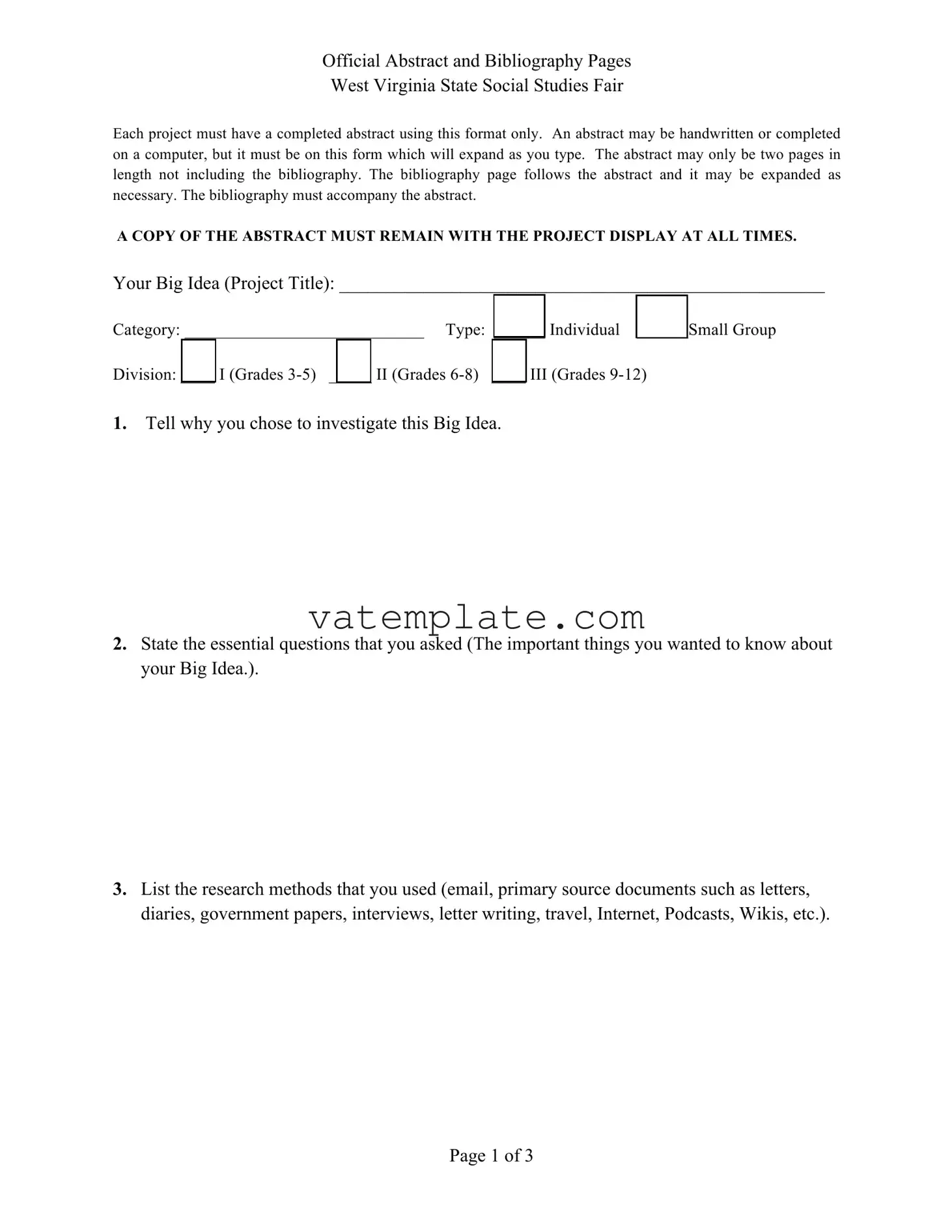FAQs - West Virginia Abstract Social Studies Fair Form
This form is designed to provide a structured overview of a student's project for the West Virginia State Social Studies Fair. It guides students to detail their project's title, the motivation behind choosing their topic, the research methods employed, and sources of information. The form facilitates a concise representation of the project’s objectives, methodologies, findings, and conclusions, ensuring a comprehensive understanding for judges and viewers.
Can the abstract be handwritten?
Yes, students have the option to either handwrite their abstracts or complete them on a computer. However, it is mandatory that the abstract is filled out on the provided official form, which is designed to expand as text is added, ensuring enough space for all necessary details.
What is the maximum length allowed for the abstract?
The abstract may extend up to two pages in length, excluding the bibliography. This length limitation compels students to be clear and concise in their presentation of the project's main ideas, research findings, and conclusions.
Yes, the bibliography must follow a specific bibliographic format that includes essential information such as the author, title, place of publication, publisher, and publication date. Although a website link is provided for reference, students are encouraged to adhere to standard bibliographic formats that can also accommodate various types of sources like audiovisuals, Internet resources, newspapers, and interviews.
What happens if the abstract does not stay with the project display?
A copy of the abstract must remain with the project display at all times during the fair. This requirement ensures that judges and fair attendees can easily understand the project's scope, purpose, and conclusions without needing to directly consult with the project creators. The presence of the abstract facilitates better engagement and comprehension among the fair’s audience.
How should students choose their project title and category?
Choosing a project title and category involves identifying a subject of interest within the social studies discipline that captivates the student's curiosity and aligns with the fair's themes and guidelines. The title should concisely reflect the essence of the project, while the category selection should correspond to the project's content, ensuring it is matched with similar projects for fair judging. When selecting these elements, students should consider their passion, resources available, and the potential impact their project could have on the audience.

